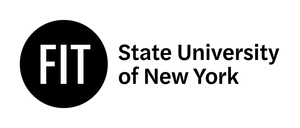NEW YORK, Dec. 14, 2021 /PRNewswire/ -- The Museum at FIT presents Reinvention and Restlessness: Fashion in the Nineties, an exhibition centered on a decade that not only heralded the end of a century but the end of a millennium. With concepts ranging from minimalism to the revitalization of luxury design houses, the 1990s overflowed with styles that intrigued critics and consumers alike. "The curator of acclaimed exhibitions like Fairy Tale Fashion, Colleen Hill has outdone herself with this brilliant and timely exhibition on the fashions of the 1990s, which have come back into vogue for a new generation," says MFIT Director and Chief Curator Valerie Steele.
Reinvention and Restlessness: Fashion in the Nineties features more than 85 garments and accessories, the majority of which were selected from MFIT's permanent collection of 50,000 objects. The introductory gallery highlights the connections between fashion and popular culture, from fashion's increasing presence on television to the growing fame of supermodels. Videos of runway presentations and clips from films and television shows such as Clueless and Sex and the City help illustrate the theme.
The main gallery features eight important trends that helped define the 1990s. Minimalism—characterized by its pared-down silhouettes and neutral palette—became a leading style in the first half of the decade. Both minimalism and grunge styles were perceived as reactions to the excesses of 1980s fashion, though they looked entirely different. Grunge ensembles—based on a style of clothing worn by musicians in the Pacific Northwest—tended to be layered and mismatched.
Many designers renounced overtly lavish styles during the first half of the 1990s, but luxury soon marked its return. Established labels helped to revamp their images by hiring fresh young talent, exemplified by Tom Ford at Gucci and Alexander McQueen at Givenchy. On the other end of the spectrum, "deconstruction" caught on in the 1990s as a descriptor for clothing with an unfinished and unconventional appearance.
While some designers were pushing the envelope to create ingenious new styles, others were engaging with an array of influences from fashion's past. Yet contemplations of the future of fashion proved to be as compelling as a dive into fashion history. Swift advancements in computer technology and the expansion of the internet changed the ways that clothing was made, worn, and consumed.
Developments in technology, coupled with economic and political changes, also strengthened interconnectivity between people and places. In fashion, this translated into the "global wardrobe," a mélange of styles with myriad influences. Moreover, the environmental impact of fashion production was also making its way into public consciousness during the 1990s, and a handful of forward-thinking designers and labels introduced lines that centered on earth-friendly materials and manufacturing.
In addition to the array of clothing on display, visitors will enjoy illustrations of 10 key styles from the exhibition by the renowned artist Ruben Toledo, made especially for Reinvention and Restlessness: Fashion in the Nineties. The exhibition design is by architect Kimberly Ackert, who took inspiration from both deconstruction and minimalism.
Reinvention and Restlessness: Fashion in the Nineties is accompanied by a book of the same title, published by Rizzoli Electa and available at major booksellers. Written by exhibition curator Colleen Hill, the publication also includes essays by curator and writer Shonagh Marshall, MFIT Deputy Director Patricia Mears, and MFIT Director and Chief Curator Valerie Steele. It features more than 100 stunning images by photographers such as Corrine Day, Patrick Demarchelier, Nick Knight, Rankin, David Sims, and Ellen von Unwerth.
The exhibition is accompanied by MFIT's 26th annual fashion symposium. This virtual event will air on YouTube Premiere on Friday, February 11, 2022, from 11 am to 1:30 pm ET. In addition to MFIT's Colleen Hill, Patricia Mears, and Valerie Steele, the dynamic lineup of speakers includes Paul Boudens, graphic designer; Lamine Badian Kouyaté, fashion designer and founder of the fashion label Xuly.Bët; Marco Pecorari, director of MA in Fashion Studies program at Parsons Paris; and Alexandre Samson, curator of haute couture (from 1947) and contemporary creation at the Palais Galliera.
The museum will be open Wednesdays, Thursdays, and Fridays from noon to 8 pm, and Saturdays and Sundays from 10 am to 5 pm. Admission is free. It is mandatory that all visitors, regardless of their vaccination status, wear a face mask while in the museum. All visitors are requested to review the latest safety guidelines and protocols, available here.
For more information and the latest MFIT updates, click here; register for the newsletter here; and follow us on Instagram, Twitter, and Facebook.
About The Museum at FIT (MFIT)
The Museum at FIT, which is accredited by the American Alliance of Museums, is the only museum in New York City dedicated solely to the art of fashion. Best known for its innovative and award-winning exhibitions, the museum has a collection of more than 50,000 garments and accessories dating from the 18th century to the present. Like other fashion museums, such as the Musée de la Mode, the Mode Museum, and the Museo de la Moda, The Museum at FIT collects, conserves, documents, exhibits, and interprets fashion. The museum's mission is to advance knowledge of fashion through exhibitions, publications, and public programs. Visit fitnyc.edu/museum.
The museum is part of the Fashion Institute of Technology (FIT), a State University of New York college that has been an internationally recognized leader in career education in design, fashion, business, and technology for 75 years. Providing an uncommon blend of practical experience and theory on a foundation of arts and sciences, FIT offers a wide range of affordable programs that foster innovation, collaboration, and a global perspective. FIT draws on its New York City location to provide a vibrant, creative environment for learning, exploration, and research. The college offers nearly 50 degree programs and grants AAS, BFA, BS, MA, MFA, and MPS degrees, preparing students for professional success and leadership in the creative economy. Visit fitnyc.edu.
Couture Council
The Couture Council is a membership group that helps support the exhibitions and programs of The Museum at FIT. The Couture Council Award for Artistry of Fashion is given to a selected designer at a benefit luncheon held every September. For information on the Couture Council, call (212) 217-4532 or email [email protected].
Reinvention and Restlessness: Fashion in the Nineties has been made possible thanks to the generosity of the Couture Council of The Museum at FIT, The Coby Foundation, and the New York State Council on the Arts.
Free and open to the public
For press assets and images: https://bit.ly/3CYHmPH
Contact:
Steven Bibb
Press Associate
[email protected]
SOURCE The Museum at FIT

WANT YOUR COMPANY'S NEWS FEATURED ON PRNEWSWIRE.COM?
Newsrooms &
Influencers
Digital Media
Outlets
Journalists
Opted In





Share this article